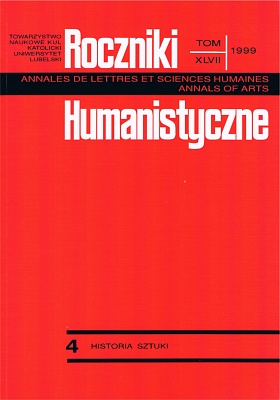The Palace in Opole Lubelskie Its History and Collections
Abstract
The Opole estate from the fourteenth to the seventeenth century belonged to the Słupecki family. In the sixteenth century a representative of that family Stanisław Słupecki (d. 1575) converted the family residence according to the then fashion. Słupecki, a man educated at the European universities, started collecting the works of art, especially Dutch and Italian paintings, and collected books. It was Feliks Słupecki (d. 1617), a Lublin castellan, who then continued the conversion the Opole seat before 1613. The palace belonged to the most interesting works of 17th-century Polish residential architecture. At the time of Feliks Słupecki there were many prominent representatives of European Protestantism at the Opole court.
The collections of painting collected from the sixteenth century were still enlarged after the Słupecki family had died out. In the 1740s Jan Tarło, the owner of Opole, made extensions or built a new palace in which there is room for a collection of painting. According to the inventory book of 1750 there were genre pieces, animalistic paintings, landscapes, still lifes, and also martial scenes. Another group represented mythological and Biblical scenes and paintings of saints. A separate collection was composed of family portraits, among other things, the Leszczyński, the Lubomirski and the Tarło families. There was no lack of kings, hetmans, primates and cardinals.
In the years 1766-1772 Zofia Krasińska (neé Tarłowa) Lubomirska extended the palace into a classicistic residence. Lubomirska created in her estate one of the most important cultural centres in 18th-century Poland.
Copyright (c) 1999 Roczniki Humanistyczne

This work is licensed under a Creative Commons Attribution-NonCommercial-NoDerivatives 4.0 International License.





